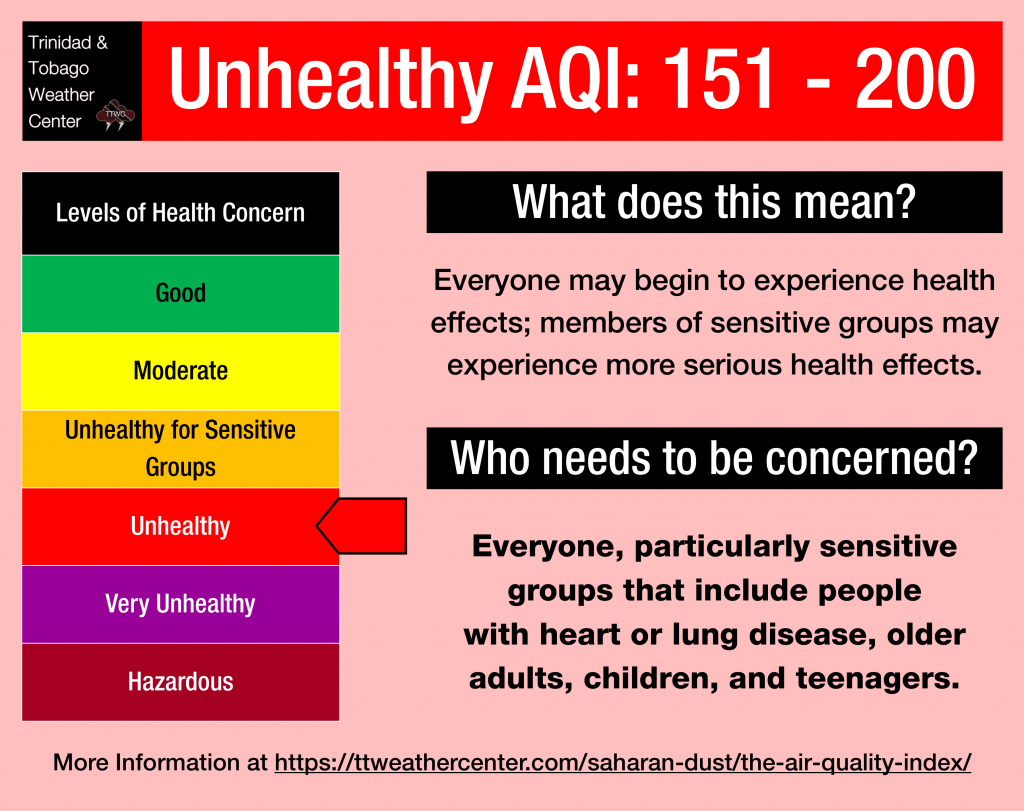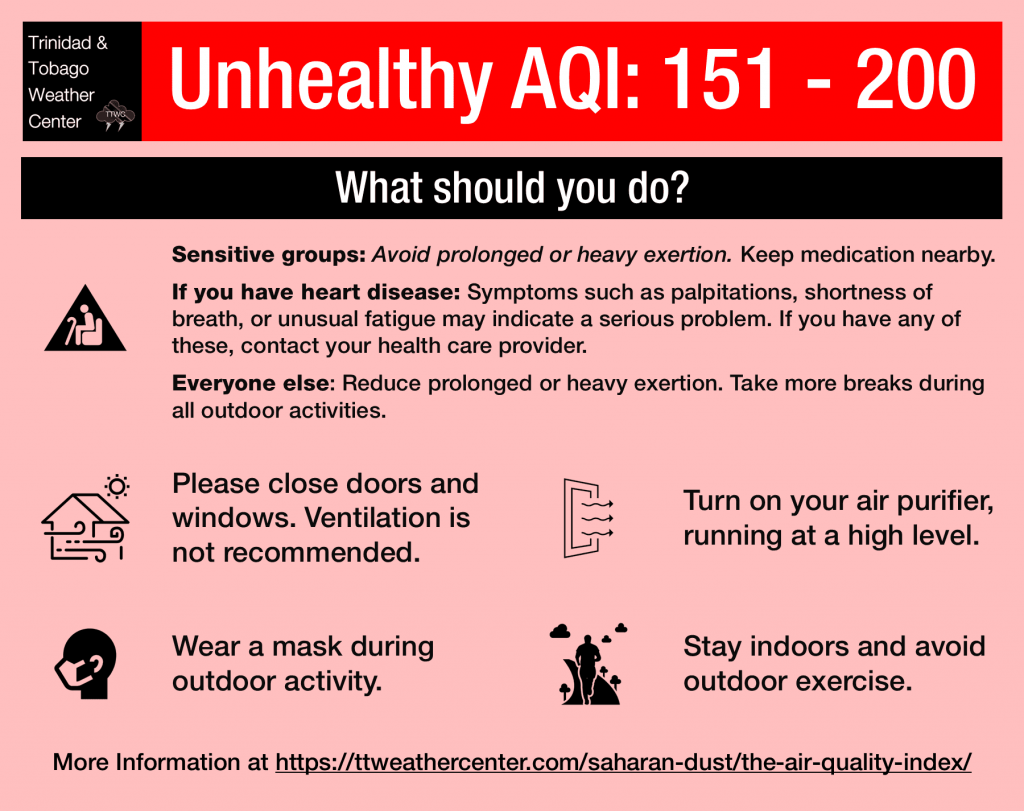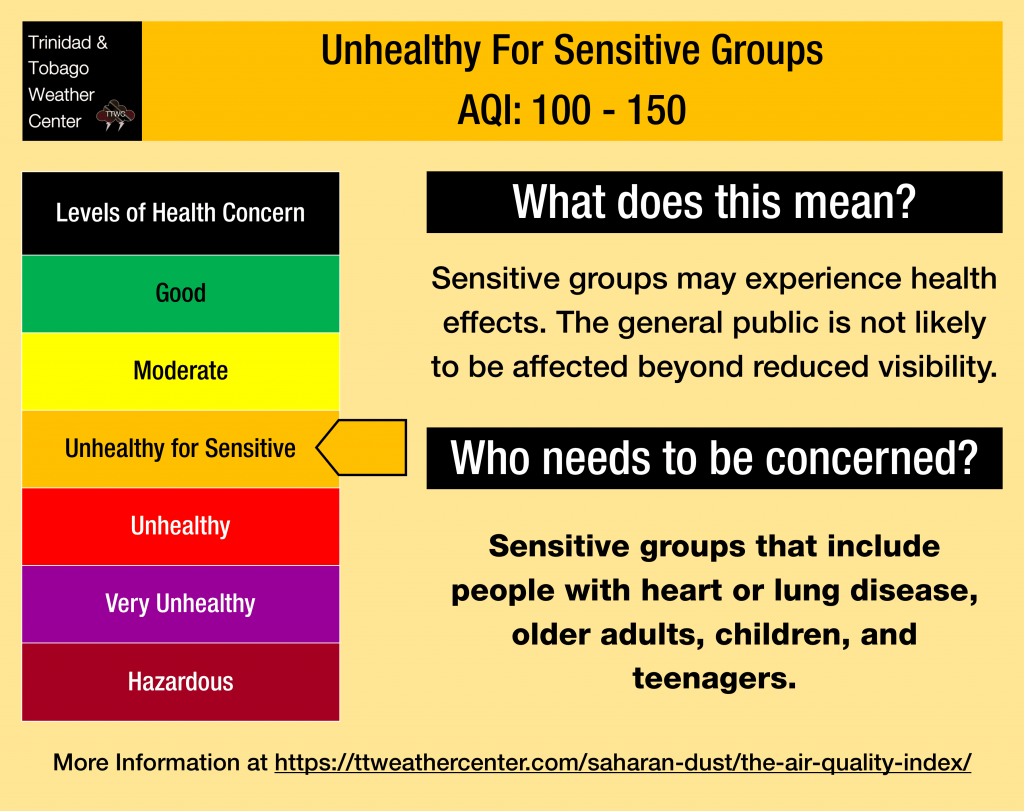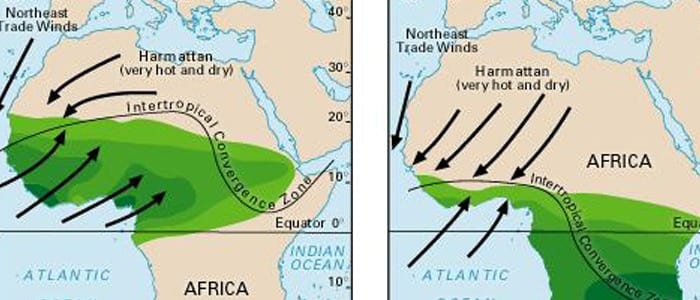Saharan Dust concentrations are forecast to gradually reduce into the coming week, with some relatively dust-free days expected. However, long-range models and satellite imagery suggest another surge, now moving off the African coast, is forecast to arrive across T&T by next week Saturday.
What you need to know
— Saharan Dust Surges: A moderate concentration surge of Saharan Dust is present across Trinidad and Tobago, with improvement forecast to begin from February 19th through February 25th, with little to no dust present. Another moderate to high-concentration surge is forecast to arrive across T&T by February 24th, 2024.
— Impacts: Over the next five to ten days, air quality across T&T will range between good and moderate levels, occasionally dipping further near fires or high traffic.
— What Should You Do: Throughout the forecast period, unusually sensitive groups are advised to take the necessary precautions, particularly during high traffic and in the vicinity of fires.
Current AQI Levels Across T&T

The official air quality monitoring stations from the Environmental Management Agency (EMA) at San Fernando, Beetham, Port of Spain, Mayaro, Toco, and Point Lisas are all reporting moderate levels. As of Friday afternoon, the station at Signal Hill, Tobago, is not reporting PM2.5 or PM10 data.
Unofficial air quality monitoring stations at Longdenville, St. Augustine and Woodbrook report moderate air quality.
These measurements are based on PM2.5 (particulates the size of 2.5 micrometers and smaller, usually associated with increases in Saharan Dust, vehicle exhaust, and smoke) and PM10 particulates.
Over the last 24 hours, visibility has remained at 10 kilometers at the A.N.R. Robinson International Airport at Crown Point, Tobago, and while at the Piarco International Airport, Trinidad, visibility has fluctuated between 8 and 10 kilometers.
Saharan Dust Forecast

Friday (Feb 16th) through Wednesday (Feb 21st): Mild to moderate concentrations of Saharan Dust across T&T and the southern half of the Lesser Antilles. Air quality: good to moderate, occasionally at unhealthy for sensitive groups in high traffic and near fires/blowing smoke.
PM Wednesday (Feb 21st) through PM Friday (Feb 23rd): Little to no Saharan Dust across T&T and the Windwards. Air quality: Mostly good, to occasionally moderate.
Saturday (Feb 24th) through Monday (Feb 26th): Moderate to occasionally high concentrations of Saharan Dust across T&T and the Lesser Antilles. Air quality: Moderate to unhealthy for sensitive groups, dipping to unhealthy near high traffic, blowing smoke and dust.
What does this mean for you?


Everyone may begin to experience health effects, and members of sensitive groups may experience more serious health effects. Everyone should take the necessary precautions, particularly when peak concentrations are forecast.


From February 19th, air quality is forecast to gradually improve across Trinidad and Tobago as higher concentrations of Saharan Dust move westward. However, with elevated concentrations still present and drier conditions bringing the risk of fires, air quality is still forecast to be reduced, with further reductions in localized areas of fires, blowing smoke and dust, and high traffic.


During this period, a ridge of high pressure stays over the central Sahara Desert, and the Intertropical Convergence Zone (ITCZ) remains over the Gulf of Guinea. The Harmattan wind accelerates when it blows across the mountain massifs of Northwest Africa. If its speed is high enough and it blows over dust source regions, it lifts the dust and disperses it.
The surges of dust during this time of year are due to the Harmattan, a season in the West African subcontinent that occurs between the end of November and the middle of March. During this season, a predominant northeasterly trade wind (dubbed the Harmattan Winds) blows from the Sahara Desert over Western Africa into the Gulf of Guinea.

Dust that makes it into the upper levels of the atmosphere can then get transported across the Atlantic Ocean and affect the Eastern Caribbean. These Saharan Dust outbreaks tend to be milder in the Eastern Caribbean than the dust outbreaks.











